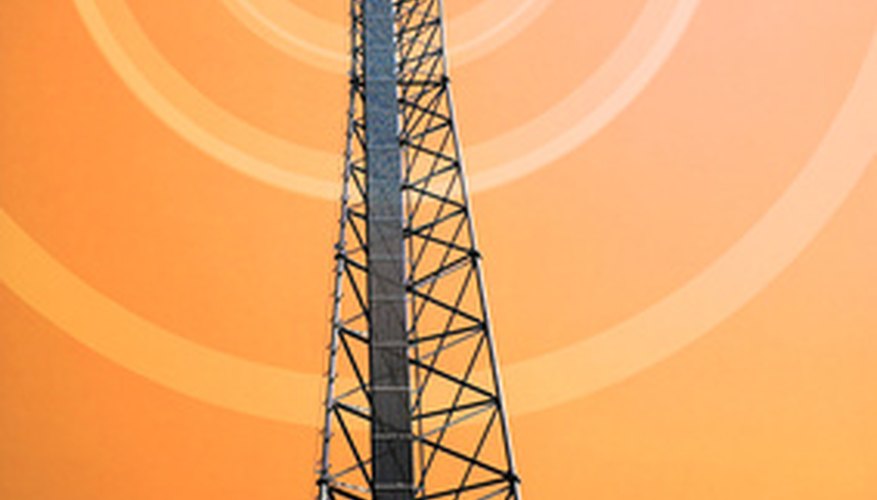Microwave radio signals are electromagnetic waves with high frequencies (between 500MHz to 300 GHz) and short wavelengths. According to "Electronic Communications System: Fundamentals Through Advanced, 5/e," approximately 35 per cent of all terrestrial communication is maintained by microwave radio relay systems. There are various types of microwave radio communication systems, operating anywhere between 15 miles to 4,000 miles, including feeder service or intrastate microwave systems and long-haul microwave systems.
Advantage: Able to Transmit Large Quantities of Data
According to "Microwave Communication," microwave radio systems have the capacity to broadcast great quantities of information because of their higher frequencies. They use repeaters (a device that receives the transmitting signal through one antenna, converts it into an electrical signal and retransmits it) to transmit large volumes of data over great distances. Microwave radio communication systems propagate signals through the earth's atmosphere. These signals are sent between transmitters and receivers that lie on top of towers. This allows microwave radio systems to transmit thousands of data channels between two points without relying on a physical transmitting medium (optical fibres or metallic cables).
- According to "Microwave Communication," microwave radio systems have the capacity to broadcast great quantities of information because of their higher frequencies.
- This allows microwave radio systems to transmit thousands of data channels between two points without relying on a physical transmitting medium (optical fibres or metallic cables).
Advantage: Relatively Low Costs
Microwave communication systems have relatively low construction costs compared with other forms of data transmission, such as wireline technologies. A microwave communication system does not require physical cables or expensive attenuation equipment (devices that maintain signal strength during transmission). Mountains, hills and rooftops provide inexpensive and accessible bases for microwave transmission towers.
Disadvantage: Line of Sight Technology
Microwave radio systems are a line of sight technology, meaning the signals will not pass through objects (e.g., mountains, buildings and aeroplanes). This drawback limits microwave communication systems to line of sight operating distances. Signals flow between one fixed point to another, provided no solid obstacle disrupts the flow.
Disadvantage: Subject to Electromagnetic and Other Interference
According to "Rural America at the Crossroads: Networking for the Future," microwave radio signals are affected by electromagnetic interference (EMI). EMI is any disturbance that degrades, obstructs or interrupts the performance of microwave signals. Microwave signal disruption EMI is caused by electric motors, electric power transmission lines, wind turbines, television/radio stations and cell phone transmission towers. Wind turbines, for instance, scatter and diffract TV, radio and microwave signals when placed between signal transmitters and receivers. Microwave radio communication is also affected by heavy moisture, snow, vapour, rain and fog due to rain fade (the absorption of microwave signals by ice, snow or rain, causing signal degradation and distortion).
- According to "Rural America at the Crossroads: Networking for the Future," microwave radio signals are affected by electromagnetic interference (EMI).
- Microwave radio communication is also affected by heavy moisture, snow, vapour, rain and fog due to rain fade (the absorption of microwave signals by ice, snow or rain, causing signal degradation and distortion).
